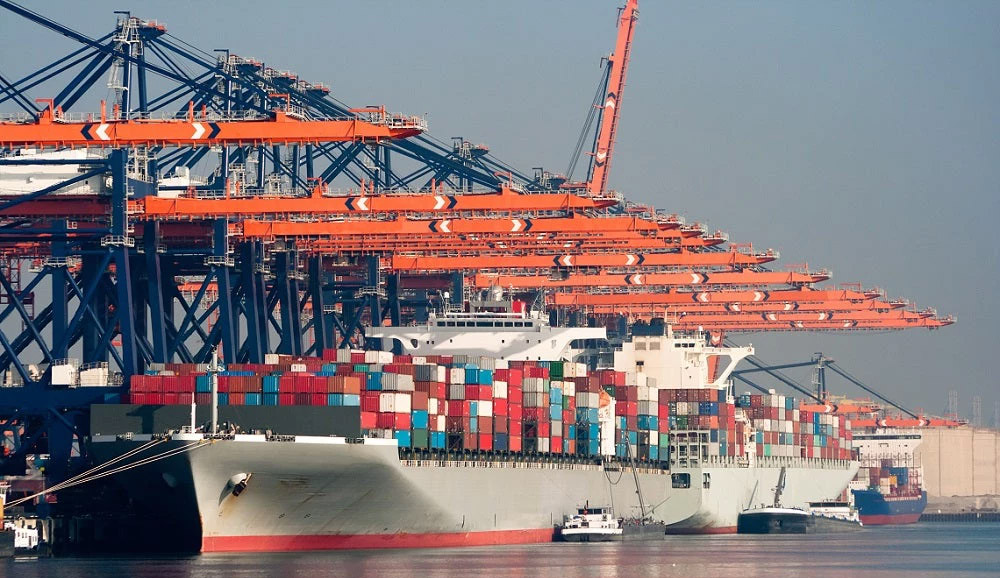In the intricate web of global commerce, container ports are the critical junctures where maritime and land-based transport networks converge. The efficiency of these ports significantly impacts the speed and cost of international trade. As the volume of global trade continues to rise, the importance of connectivity within container ports becomes increasingly paramount. Connectivity underpins the seamless operation of ports, enabling efficient cargo handling, enhanced security, and environmental sustainability. This article delves into the vital role of connectivity for container ports and how it drives operational excellence.
Enhancing Operational Efficiency
Connectivity is essential for the integration and optimisation of various port operations. It facilitates the real-time exchange of information and coordination among different stakeholders, which is crucial for maintaining smooth and efficient port activities.
Integrated Systems
Modern container ports rely on integrated systems to manage the complex web of operations. These systems include Terminal Operating Systems (TOS), Port Community Systems (PCS), and various automated machinery. Connectivity ensures these systems work in unison, enabling seamless communication and coordination. This integration reduces delays, optimises resource allocation, and enhances the overall efficiency of port operations.
Real-time Data Exchange
The ability to exchange data in real-time is a game-changer for port operations. Connectivity allows for continuous monitoring and reporting of cargo movements, equipment status, and environmental conditions. Real-time data exchange facilitates proactive decision-making, allowing port operators to swiftly address any issues that arise. This capability is crucial for minimising downtime and ensuring the timely handling and delivery of cargo.
Advancing Technological Innovation
Connectivity is the backbone that supports the adoption of advanced technologies in container ports. These technologies drive improvements in efficiency, security, and sustainability, transforming ports into smart, high-tech hubs.
Automation
Automation technologies, such as automated cranes, guided vehicles, and robotic systems, are revolutionising port operations. These systems are interconnected through central control units, which optimise their performance and coordination. Connectivity ensures that automated systems operate harmoniously, reducing manual labour, minimising errors, and enhancing productivity.
Internet of Things (IoT)
IoT devices play a pivotal role in modern container ports by providing real-time data on various aspects of port operations. Sensors and tracking devices monitor container conditions, track equipment performance, and gather environmental data. Connectivity enables these devices to communicate with central systems, providing valuable insights for improving operational efficiency and maintaining high standards of safety and security.
Blockchain Technology
Blockchain technology offers a secure and transparent platform for managing transactions and data exchange in ports. By creating an immutable ledger, blockchain ensures the integrity and transparency of data, reducing the risk of fraud. This technology is particularly useful for streamlining processes such as customs clearance, documentation, and payment settlements. Connectivity facilitates the integration of blockchain technology, enhancing trust and efficiency in port operations.
Ensuring Security and Compliance
Security is a paramount concern for container ports, and connectivity plays a crucial role in enhancing the safety of port operations. It enables the implementation of advanced security measures and ensures compliance with regulatory requirements.
Enhanced Surveillance
Connectivity allows for the integration of advanced surveillance systems, including CCTV cameras, motion detectors, and automated access controls. These systems provide real-time monitoring of port facilities, ensuring the security of cargo and personnel. Real-time data from surveillance systems can be analysed to detect and respond to potential threats promptly.
Regulatory Compliance
Container ports must comply with various international and local regulations related to safety, security, and environmental standards. Connectivity ensures that ports can monitor and report compliance in real-time. Integrated systems can automatically track regulatory requirements and alert port operators to any deviations, ensuring timely corrective actions and maintaining compliance.
Promoting Sustainability
Sustainability is becoming an increasingly important aspect of port operations. Connectivity enables the adoption of green technologies and practices that reduce the environmental impact of port activities.
Energy Management
Effective energy management is crucial for reducing the carbon footprint of container ports. Connectivity enables the integration of renewable energy sources, such as solar and wind power, into port operations. Energy management systems can monitor and optimise energy usage in real-time, reducing reliance on fossil fuels and minimising emissions.
Emission Control
Connectivity facilitates the implementation of emission control technologies, such as shore power systems and emission monitoring devices. Shore power allows ships to plug into the local power grid while docked, reducing the need to run auxiliary engines and lowering emissions. Real-time monitoring of emissions ensures compliance with environmental regulations and helps ports take proactive measures to reduce their environmental impact.
Conclusion
Connectivity is the cornerstone of modern container port operations, driving efficiency, innovation, security, and sustainability. By enabling seamless communication and coordination among various systems and stakeholders, connectivity ensures the smooth functioning of port activities. As global trade continues to expand, the importance of robust connectivity in maintaining competitive and sustainable port operations cannot be overstated. Embracing connectivity is essential for container ports to thrive in the dynamic landscape of international commerce.
#ContainerPorts #PortConnectivity #SmartPorts #Logistics #IoT #Automation #Blockchain #SustainablePorts #EnergyManagement #GlobalTrade
